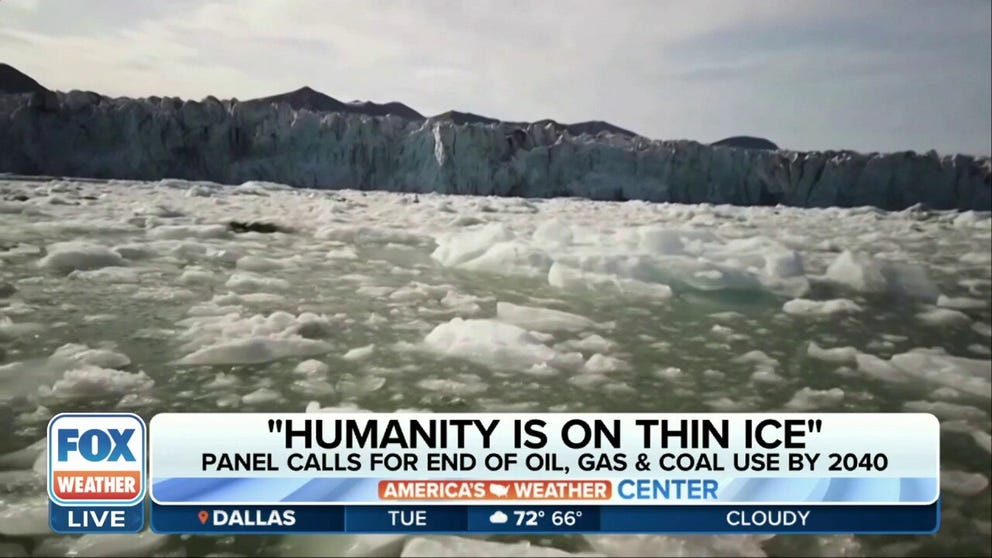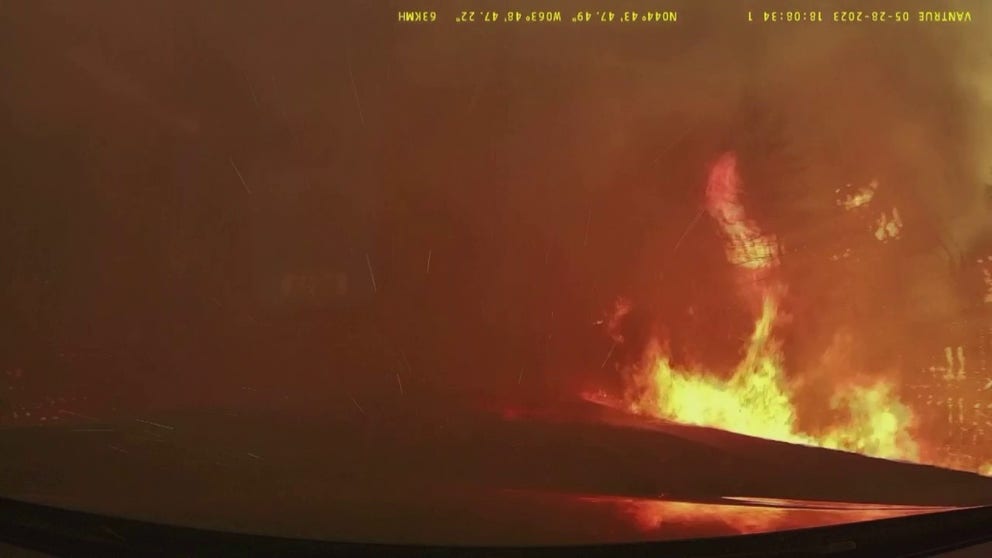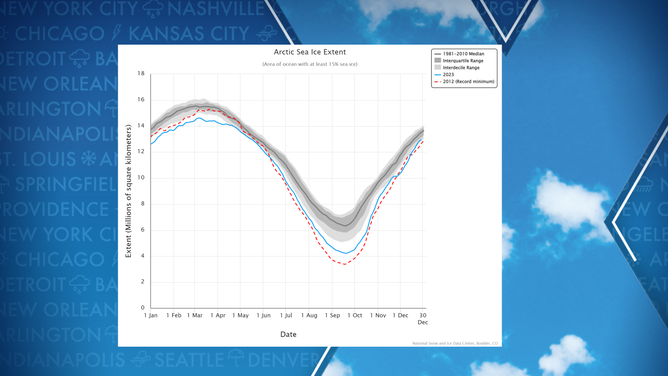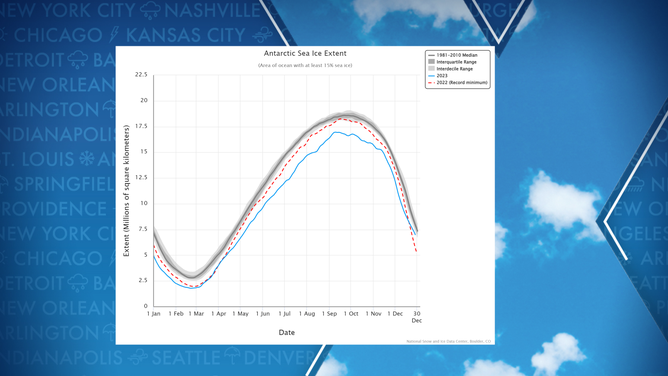2023 finishes as warmest year on record
Forecasters attributed the warm weather to the influences of El Nino and climate change. According to NOAA, global annual temperatures have increased at a rate of 0.07 degrees Celsius (0.126 degrees Fahrenheit) per decade since 1880. Agencies have different methodologies for determining the average global temperature, so some records are cooler and others are warmer, but all are around the same average.
'Humanity is on thin ice': United Nations panel says time running out to combat climate change
Action to prevent and reverse the deadly and devastating effects of climate change around the world must be taken immediately before it’s too late, warned a new United Nations climate change report. Fox News Correspondent Jackie Ibanez has the latest.
Heat waves plagued nearly every corner of the world in 2023, which sent temperatures into record territory.
According to preliminary climate data from NOAA and analysis from the Climate Change Institute at the University of Maine, the global temperature anomaly finished higher than 2016’s record of 0.99 degrees Celsius (1.78 degrees Fahrenheit) above average.
December’s global observations are still being analyzed, but annual temperature anomalies could finish well above 1 degree Celsius (1.8 degrees Fahrenheit) higher than average – the first time the yearly average temperature has clocked in above 1 degree Celsius.
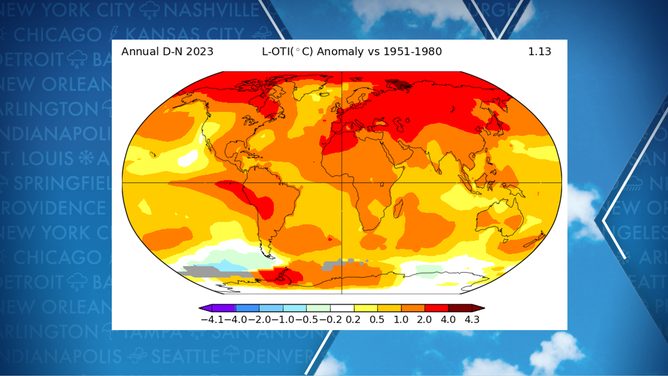
NASA temperature anomaly for 2023.
(NASA)
The news shouldn’t be surprising as NOAA’s National Centers for Environmental Information, Europe’s Copernicus Climate Change Service and the World Meteorological Organization all said it was a virtual assurance that 2023 would finish at record levels.
In fact, NOAA climatologists said in November there was greater than a 99% chance that the year would finish as Earth’s warmest – a percentage that is rarely used in the meteorological community due to the potential for error.
The agency reports that recordkeeping started in 1880, and all the years that comprise the past decade account for the warmest period in history.
EL NINO APPEARS TO BE ON VERGE OF RAPID COLLAPSE
What caused the record heat? Some forecasters point to the emergence of a strong El Niño weather pattern – the first in four years.
Every El Niño episode in modern history has produced the warmest period, only to be outdone by the next El Niño event.
Researchers estimated the 2016 El Niño event was directly responsible for only about 0.12 degrees Celsius (0.22 degrees Fahrenheit) of the 0.99-degree Celsius (1.78-degree Fahrenheit) anomaly, meaning that other weather features and climate change might be playing a more prominent role than is acknowledged.
The record heat aided in the development of significant drought conditions across Australia, South America and Canada.
America’s northern neighbors experienced their worst wildfire season in history, with nearly 46 million acres destroyed by the flames – a figure nearly three times as large as the previous record holder.
The U.S. even saw impacts from the wildfires, with days of historically poor air quality and smoke-filled skies.
Watch: Chaotic video shows man trying to escape raging wildfire in Nova Scotia, Canada
Video recorded in Nova Scotia, Canada, on May 28, 2023, shows a man trying to drive through a raging wildfire in order to escape the flames. At one point in the video, his vehicle nearly slams into another that was stopped on the road but wasn't seen until the last minute due to the thick, black smoke.
The exact toll the heat played on economies and lives are figures that may not be known for years, as researchers’ best estimates have come from studies versus unreliable data from countries around the world.
A recent study published in The Lancet Planet Health estimated around 500,000 deaths a year could be linked to extreme heat around the globe, while the causality figure during extreme cold was closer to 4.5 million.
US monthly temperatures
Unlike the global record, the contiguous U.S. did not have its warmest year. Through the first 11 months of the year, the country hovered around an anomaly of 1.1 degrees Celsius (nearly 2 degrees Fahrenheit) above average, which was warm enough for a top-10 finish.
A cold end to winter and start to spring in 2023 caused the year to miss breaking 2012’s record of 1.81 degrees Celsius (3.26 degrees Fahrenheit) above average.
Despite the cold start to the year, heat waves became numerous across the country during the summer and fall.
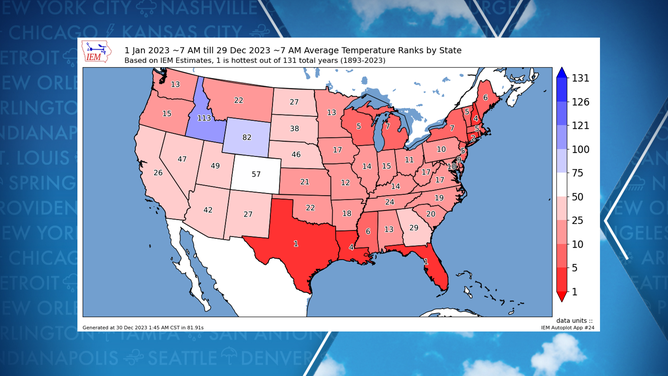
U.S. temperature rankings for 2023 (1 represents the warmest year ever, and 131 represents the coldest year ever).
(Iowa Environmental Mesonet / FOX Weather)
In June, Puerto Rico was one of the first territories to experience life-threatening heat. A ridge of high pressure caused multiple days to reach the 90s with a heat index outside of San Juan of 125 degrees Fahrenheit.
The heat spread westward to the southern U.S. in July, with Death Valley, California, nearing its all-time world record of 134 degrees Fahrenheit and Phoenix reporting 31 straight days of reaching at least 110 degrees Fahrenheit.
By the end of the summer, heat waves enveloped the Midwest and Northeast.
Chicago recorded its hottest heat index ever at 120 degrees Fahrenheit, and New York City saw a stretch of 90-degree readings in September.
Not only were the usual warm months hot, but above-average temperatures stretched well into the winter season.
According to initial weather observations, December was on track to finish with temperatures of at least 5 degrees Fahrenheit above average for the contiguous U.S. as a whole.
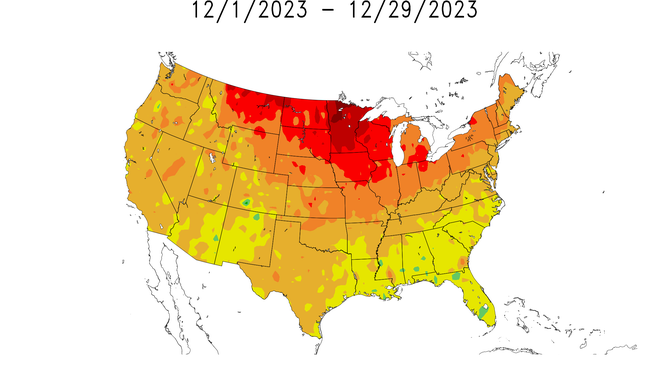
December temperature departures from average.
(High Plains Regional Climate Center/NOAA / FOX Weather)
Sea ice record lows
The combined extent of Arctic and Antarctic sea ice hovered at record lows for most of the year.
According to NOAA’s National Snow and Ice Data Center (NSIDC), the amount of sea ice around the Antarctic, during its usual maximum extent, was at a record low in September. Satellite data estimated the extent to be 6.55 million square miles – about the size of Mexico and the U.S. combined.
"It’s a record-smashing sea ice low in the Antarctic," Walt Meier, a sea ice scientist at NSIDC, stated. "Sea ice growth appears low around nearly the whole continent as opposed to any one region."
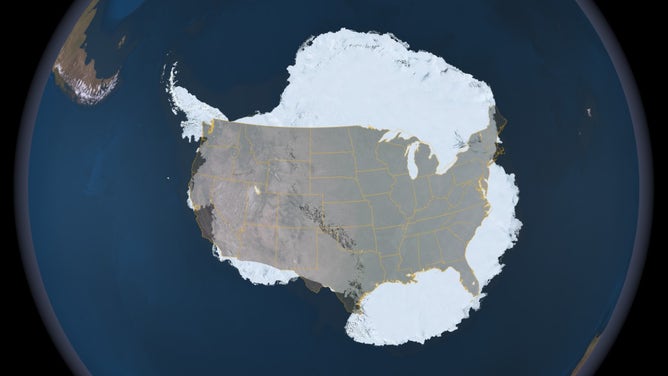
NOAA illustration comparing the size of Antarctica to the U.S.
(NOAA)
Analysis calculated Arctic sea ice reached a minimum extent of just 1.6 million square miles in September.
This was the sixth-lowest minimum on record, which stretches back some 45 years.
"It is more open there than it used to be," Meier added. "There also seems to be a lot more loose, lower concentration ice – even toward the North Pole – and areas that used to be pretty compact, solid sheets of ice through the summer. That’s been happening more frequently in recent years."
Larger areas of exposed oceans help absorb more of the Sun’s energy, leading to increased planet warming and decreased ice growth.
It is important to note that agencies have different methodologies for determining global temperatures and the extent of sea ice, so records might vary. The data does not minimalize the year’s continued march into records never experienced during human times.
